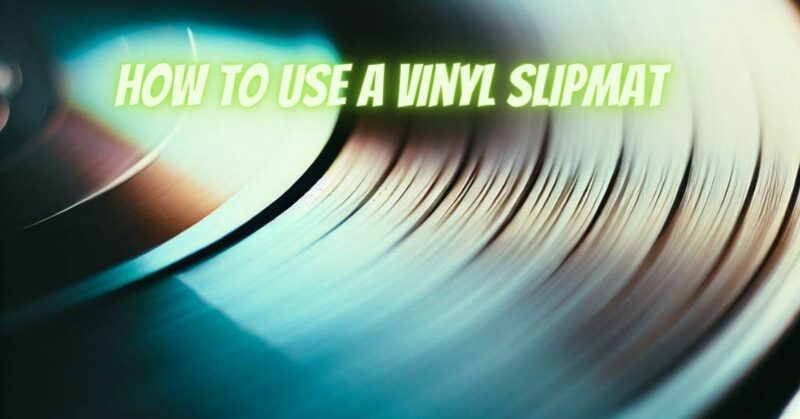Using a slip mat is a common practice among vinyl enthusiasts to enhance playback quality and protect their records. Slip mats are placed between the turntable platter and the vinyl record, reducing friction, improving sound quality, and offering stability. In this article, we will guide you through the proper usage and maintenance of a vinyl slip mat for optimal performance.
- Preparation: Before using a slip mat, ensure that your turntable is powered off and the platter is stationary. Take this opportunity to clean both the platter and the vinyl record surface using a carbon fiber brush or a record cleaning brush to remove any dust or debris.
- Positioning: Carefully place the slip mat on the turntable platter. The slip mat should cover the entire surface of the platter, aligning with the spindle at the center. Ensure that the slip mat is positioned flat and centered to provide stability during playback.
- Anti-Static Treatment (Optional): If your slip mat has anti-static properties or if you want to reduce static electricity buildup, you can treat the slip mat with an anti-static spray or use an anti-static brush to neutralize static charges. Follow the instructions provided with the specific anti-static product you choose.
- Placing the Vinyl Record: Once the slip mat is properly positioned, gently place the vinyl record on top of the slip mat. Align the center spindle hole of the record with the turntable spindle, ensuring that the record rests evenly on the slip mat.
- Adjusting the Tonearm: Before starting playback, adjust the tonearm settings such as tracking force, anti-skate, and vertical tracking angle (if applicable) according to the manufacturer’s instructions or the specific requirements of your turntable and cartridge. Proper tonearm adjustments ensure accurate tracking and reduce unnecessary wear on the stylus and record.
- Playback and Monitoring: Once the slip mat, record, and tonearm are correctly set up, power on the turntable and begin playback. Monitor the playback carefully to ensure smooth operation, proper tracking, and optimal sound quality. Watch for any signs of skipping, excessive vibration, or other playback issues, as these may indicate a need for further adjustment.
- Maintenance: Regularly clean and maintain your slip mat to ensure its effectiveness. Use a soft brush or cloth to remove any dust or debris that may accumulate on the slip mat’s surface. If the slip mat becomes noticeably dirty or stained, follow the manufacturer’s instructions for cleaning or consider replacing it with a new one.
Conclusion:
Using a vinyl slip mat is a simple yet effective way to enhance your vinyl playback experience. By following the proper placement and maintenance techniques outlined in this guide, you can ensure optimal performance, improved sound quality, and increased longevity for both your records and the slip mat itself. Take care to position the slip mat correctly, align the vinyl record properly, adjust the tonearm settings, and regularly clean and maintain the slip mat. With these practices in place, you can enjoy smooth and precise vinyl playback while protecting your records.

